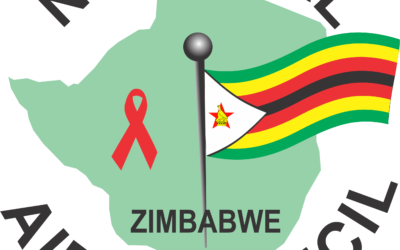
Daniel Chingoma passed away on September 13, 2024, due to an undisclosed illness, leaving behind a legacy of innovation and determination.
His death sent shockwaves throughout Zimbabwe, with tributes pouring in from various sectors.
The Children of War Veterans Association commemorated him as a true patriot and innovator, recognising his contributions to the nation's technological landscape. I was touched that the fountain of knowledge has been elevated to another level.
I followed Chingoma's innovation and creativity for a very long time.
The biography shows that Chingoma was born in 1968 to Emilia Chingoma in Zimbabwe.
He completed his primary education at Zunze Primary School in Rusape and later attended St. Mary's Mission for his secondary schooling.
Although he did not finish matriculation, Chingoma's passion for engineering and innovation flourished early in his life. Chingoma's entrepreneurial journey commenced with his work in water management solutions.
He designed and built hand-operated water pumps to address Zimbabwe’s chronic water shortages hence the name “Mhondoro yeMvura”.
- Building narratives: If I were Education, Science and Tech Development minister
- If I were Education, Science and Tech Development minister (Final Part)
- Daniel Chingoma remains my unsung hero
Keep Reading
This initiative not only provided a vital resource to communities but also laid the groundwork for his subsequent ventures in engineering.
Driven by a desire for a new challenge, Chingoma embarked on the most famous and controversial ambitious project to build a helicopter, which he named the “Zimcopter”.
Inspired by his engineering passion, he began the project in 2003, carefully sourcing materials from scrapyards and hardware stores.
According to Damiel, the Zimcopter was constructed using a Lexus V8 engine, side mirrors from a Hilux bakkie, and a tobacco thermometer for the cockpit, reflecting Chingoma's resourcefulness and creativity.
The helicopter quickly became a local attraction drawing tourists and curious onlookers. Despite its innovative design, the Zimcopter faced regulatory challenges when the government barred it from flying.
This setback did not deter Chingoma; he continued refining his creation from his water business proceeds into the project.
Chingoma immersed himself in aircraft literature, frequently visiting Harare's Charles Prince Airport and aviation clubs to learn about helicopter construction.
He even gained insights from the Air Force on how their helicopters were built. His determination bore fruit when the Zimcopter achieved a test flight, rising five meters and completing a 360-degree rotation.
Chingoma captured this achievement on a DVD, which he sold for $10, showcasing his engineering talent.
In addition to his engineering feats, Chingoma was also a talented musician. His artistic pursuits complemented his innovative spirit and contributed to his multifaceted identity.
In this article, I will focus more on his engineering works and reflect on lessons drawn from Chingoma.
Despite his passion and ingenuity, Chingoma faced several significant challenges while building the Zimcopter.
One of the most pressing issues was the regulatory hurdles, particularly the government's decision to bar the helicopter from flying, which limited the project's potential and created obstacles for further development.
Additionally, Chingoma lacked formal engineering training and a pilot’s license, making it more difficult for him to navigate the complexities of aircraft design and operation.
Funding and resource limitations also posed ongoing challenges; he invested approximately US$200,000 equivalent from his water business into the helicopter project but struggled to secure sufficient funding and source quality materials from scrapyards and hardware stores.
The technical complexity of designing and building a helicopter required Chingoma to learn about aerodynamics, mechanics, and electronics, which involved significant self-study and consultations with experts in the field.
Material sourcing was another hurdle, as he had to gather necessary components, such as a Lexus V8 engine and other specialized parts, which demanded creativity and resourcefulness to find suitable materials that met safety and performance standards.
Furthermore, the Zimcopter faced public skepticism, as it was an unconventional project that drew doubts from both the public and aviation experts, necessitating efforts to gain support for his vision.
Finally, ensuring the safety of the helicopter during testing and potential flights was crucial; Chingoma had to address safety features and risk management, particularly given his lack of formal aviation experience.
These challenges underscore Chingoma's determination and passion for innovation as he persevered through obstacles to realise his dream of creating the Zimcopter.
Chingoma addressed the regulatory hurdles he faced with the Zimcopter through a combination of persistence, self-education, and informal consultations.
He immersed himself in aviation literature, seeking knowledge about helicopter design and regulations, which allowed him to better understand the requirements for aircraft construction and operation.
Additionally, Chingoma engaged with aviation professionals and visited Harare’s Charles Prince Airport and aviation clubs to gain insights into helicopter assembly and safety standards, helping him navigate some of the complexities related to aviation regulations.
To demonstrate the capabilities of the Zimcopter, he conducted test flights, proving that the helicopter could achieve altitude and perform maneuvers, thereby validating his work and showcasing its potential.
Despite facing barriers, he sought approval from relevant authorities, including the Air Force, to learn how their helicopters were built, which may have helped him establish credibility and navigate the regulatory landscape.
Furthermore, by drawing public attention to the Zimcopter as a unique engineering project, he aimed to garner interest and support that could indirectly influence regulatory perceptions.
While these efforts did not ultimately lead to government approval for flight, they reflect Chingoma's determination to overcome obstacles and advocate for his innovative vision.
The story of Chingoma provides several valuable lessons for Zimbabwean institutes of tertiary and higher education.
First, institutions should cultivate a culture of innovation and creativity by promoting hands-on projects and encouraging students to explore unconventional ideas.
Chingoma’s success highlights the importance of interdisciplinary learning, suggesting that schools integrate engineering, business, and regulatory studies to prepare students for multifaceted real-world challenges.
This goes to posits that, very few, if any, of our tertiary institutions’ graduates have products to showcase, but Daniel Chingoma has a tried and tested Zimcopter.
Additionally, supporting self-directed learning through resources such as onsite look and learn visits can empower students to expand their knowledge beyond the classroom.
Creating networking opportunities with industry professionals is also crucial, as these connections can provide valuable insights and mentorship.
Practical, hands-on experiences should be incorporated into the curriculum through partnerships with local industries and internships to enhance learning outcomes.
Furthermore, education should emphasize problem-solving skills, resilience, and adaptability to prepare students for the uncertainties of entrepreneurship and innovation.
Finally, encouraging public engagement and raising awareness of student projects can generate community support for innovative ideas.
By drawing from Chingoma's inspirational journey, these institutions can better equip students to become innovative thinkers and effective problem solvers in a dynamic global landscape.
I still don’t understand why the University of Zimbabwe then could not take an opportunity to collaborate with Chingoma when his Zimcopter was dumped in their yard. To me it was an opportunity of taking our then young engineers an opportunity to apply theory to practice and perfect the product. Surprisingly, Daniel in his interview claimed the UZ authorities called him to come and collect his dream Zimcopter or they were going to d wrack it and dump at refuse dump sites.
- Langton Mutoya is an academic and reachable on mutoya2007@yahoo.com Mobile +263 772 702 361









